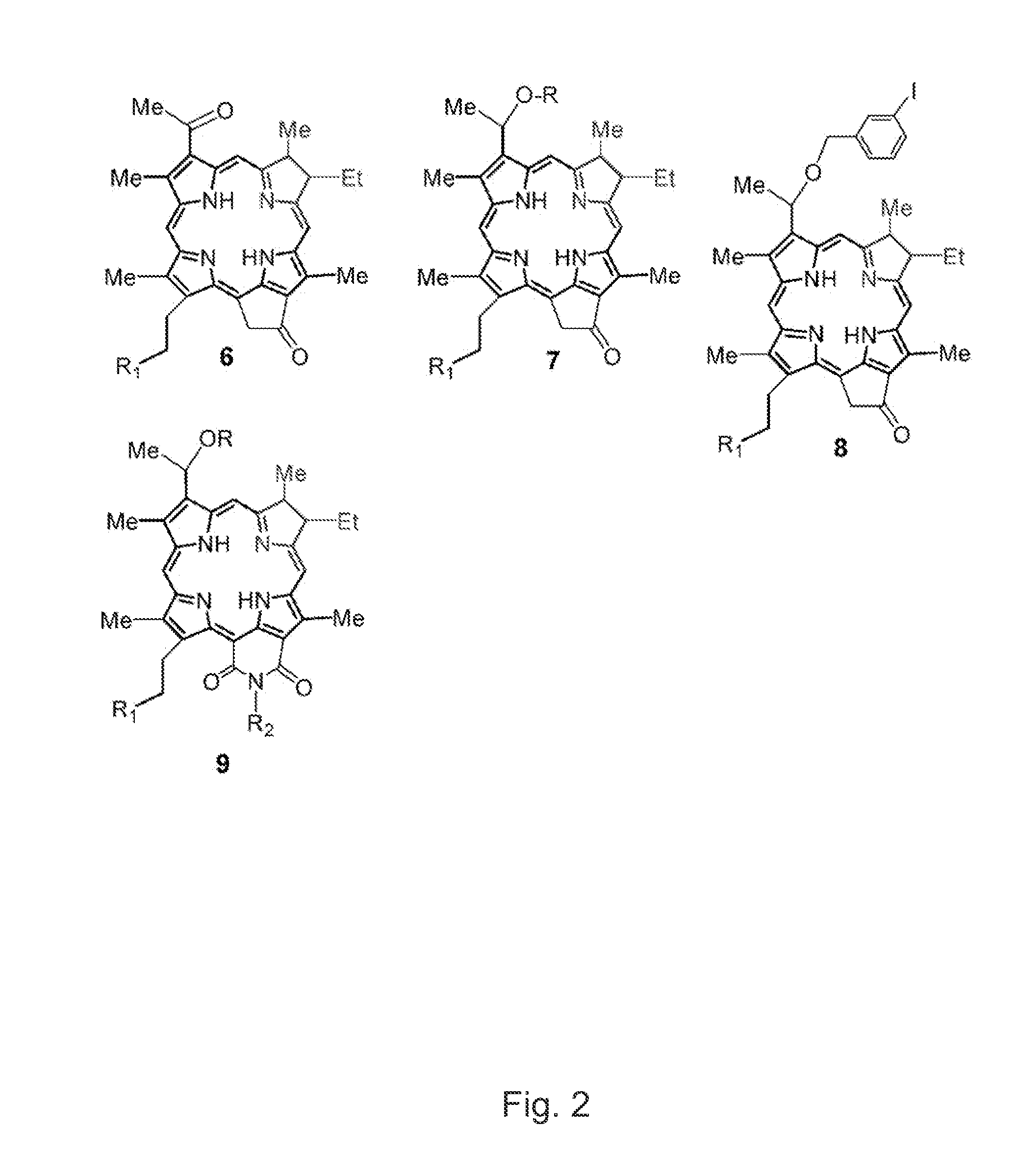B ring reduced-d ring oxidized tetrapyrollic photosensitizers for photodynamic therapy and tumor imaging
a tetrapyrollic and photodynamic therapy technology, applied in the direction of drug compositions, peptide/protein ingredients, therapy, etc., can solve the problems of limiting the penetration ability of tissue, prolonging skin phototoxicity, and difficult to cure deep seated tumors, etc., and achieves the effect of easy to make simpl
- Summary
- Abstract
- Description
- Claims
- Application Information
AI Technical Summary
Benefits of technology
Problems solved by technology
Method used
Image
Examples
Embodiment Construction
[0036]The utility of various oxidizing agents for regioselective oxidation (ring D over ring B) of bacteriochlorin 11 was investigated. As shown in Scheme 3, FIG. 9, most of the oxidizing agents (DDQ, NIS, H5IO6) on reacting with compound II afforded mainly the ring B oxidized chlorin 12 (methyl 3-acetyl-3-devinylpyropheophorbide-a) in more than 95% yield. However, to our surprise the ferric chloride (FeCl3) oxidation exclusively produced ring D oxidized chlorin 6. Interestingly, it happens to be a first example to show the remarkable utility of FeCl3 in regioselective oxidation of ring D in bacteriochlorin system. In this invention, we demonstrate a new approach for an easy access for the synthesis on novel chlorin system (B ring reduced and D ring oxidized) from readily available bacteriochlorophyll-a (Scheme 3, FIG. 9).
[0037]After having the desired new chlorin 6 (ring B reduced) in hands, our goal was to develop efficient synthetic methodologies for the preparation of its 3-(1′-...
PUM
| Property | Measurement | Unit |
|---|---|---|
| wavelength absorption | aaaaa | aaaaa |
| wavelength absorption | aaaaa | aaaaa |
| half life | aaaaa | aaaaa |
Abstract
Description
Claims
Application Information
 Login to View More
Login to View More - R&D
- Intellectual Property
- Life Sciences
- Materials
- Tech Scout
- Unparalleled Data Quality
- Higher Quality Content
- 60% Fewer Hallucinations
Browse by: Latest US Patents, China's latest patents, Technical Efficacy Thesaurus, Application Domain, Technology Topic, Popular Technical Reports.
© 2025 PatSnap. All rights reserved.Legal|Privacy policy|Modern Slavery Act Transparency Statement|Sitemap|About US| Contact US: help@patsnap.com



